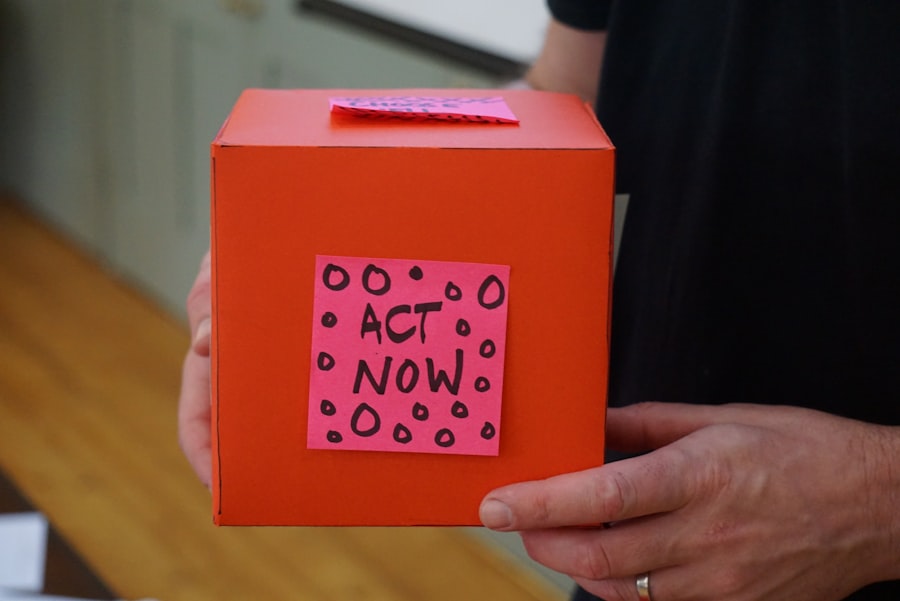How to Develop a Minimum Viable Product (MVP) for Your SaaS Startup [2024]

In the software as a service (SaaS) industry, the Minimum Viable Product (MVP) is a critical concept for startups. An MVP represents the most basic version of a product that can be released to the market, containing only essential core features. Its primary purpose is to gather maximum customer feedback and validate assumptions with minimal effort and resource investment.
The MVP approach allows SaaS startups to test product viability with real users quickly and efficiently. By focusing on solving the primary problem for their target audience, startups can avoid getting overwhelmed by unnecessary features or complexities. This strategy enables rapid learning about what aspects of the product work well and which need improvement.
Implementing an MVP strategy helps entrepreneurs set realistic expectations for their product development process. It allows them to prioritize efforts effectively, allocating resources to the most critical aspects of the product. Through this iterative process, startups can continuously refine and enhance their offerings based on actual user feedback and market demand.
Understanding and utilizing the MVP concept is crucial for SaaS startups aiming to minimize risks, optimize resource allocation, and accelerate their path to market success. It provides a structured approach to product development that aligns closely with customer needs and market realities.
Key Takeaways
- A Minimum Viable Product (MVP) is the most basic version of a SaaS product that allows you to test your idea with minimal resources.
- Identifying the core features and benefits of your SaaS product is crucial for creating an MVP that addresses the most pressing needs of your target market.
- Conducting market research and gathering user feedback helps in understanding the pain points and preferences of your target audience, which can inform the development of your MVP.
- Building a prototype and testing the MVP with early adopters allows you to validate your product concept and gather valuable insights for improvement.
- Iterating and refining your MVP based on user feedback is essential for continuously improving the product and meeting the evolving needs of your customers.
Identifying the Core Features and Benefits of Your SaaS Product
Identifying Core Features
When developing an MVP for a SaaS startup, it’s crucial to identify the core features and benefits of the product. This involves understanding the problem that the product aims to solve, and determining the essential functionalities that are required to address that problem. By focusing on the core features, startups can avoid wasting time and resources on building unnecessary elements that may not resonate with their target audience.
Understanding the Value Proposition
In addition to identifying core features, it’s important to consider the benefits that the product will provide to users. This involves understanding the value proposition of the product and how it will improve the lives or businesses of its users. By clearly articulating the benefits of the product, startups can effectively communicate its value to potential customers and differentiate it from competitors.
Creating a Resonating MVP
Ultimately, identifying the core features and benefits of a SaaS product is essential for creating an MVP that addresses a real need in the market and resonates with its target audience.
Conducting Market Research and Gathering User Feedback

Before building an MVP for a SaaS startup, it’s crucial to conduct thorough market research and gather user feedback. Market research involves understanding the competitive landscape, identifying target customer segments, and analyzing industry trends. By conducting market research, startups can gain valuable insights into the needs and preferences of their target audience, as well as potential gaps in the market that their product can address.
In addition to market research, gathering user feedback is essential for developing an MVP that resonates with its intended users. This can involve conducting surveys, interviews, or usability testing to understand how potential users perceive the product and what features are most important to them. By gathering user feedback early in the development process, startups can ensure that their MVP is aligned with user needs and preferences, increasing the likelihood of its success in the market.
By conducting thorough market research and gathering user feedback, SaaS startups can make informed decisions about the features and functionalities to include in their MVP, as well as how to position and market the product to its target audience.
Building a Prototype and Testing the MVP with Early Adopters
Once the core features of the SaaS product have been identified and validated through market research and user feedback, it’s time to build a prototype and test the MVP with early adopters. A prototype is a preliminary version of the product that allows startups to test its functionality and gather additional feedback before investing in full-scale development. By building a prototype, startups can quickly iterate on their ideas and make necessary adjustments based on early user interactions.
Testing the MVP with early adopters is crucial for understanding how real users engage with the product and identifying any potential issues or areas for improvement. Early adopters are typically more willing to try new products and provide candid feedback, making them valuable sources of insight for SaaS startups. By observing how early adopters interact with the MVP, startups can gain valuable insights into user behavior and preferences, which can inform future iterations of the product.
By building a prototype and testing the MVP with early adopters, SaaS startups can validate their assumptions about the product and make informed decisions about its future development.
Iterating and Refining Your MVP Based on User Feedback
After testing the MVP with early adopters, it’s important for SaaS startups to iterate and refine the product based on user feedback. This involves analyzing the feedback received from early adopters, identifying areas for improvement, and making necessary adjustments to the product. By iterating on the MVP, startups can address any issues or shortcomings identified during testing, as well as incorporate new ideas or features that may enhance the product’s value proposition.
Iterating and refining the MVP based on user feedback is an ongoing process that allows startups to continuously improve their product and better meet the needs of their target audience. By listening to user feedback and being responsive to their needs, startups can build a product that resonates with its users and has a higher likelihood of success in the market. Ultimately, iterating and refining the MVP based on user feedback is essential for creating a product that delivers real value to its users and stands out in a competitive market.
Launching and Marketing Your MVP to Gain Traction

Developing a Go-to-Market Strategy
Once the MVP has been iterated and refined based on user feedback, it’s time for SaaS startups to launch and market the product to gain traction in the market. This involves developing a go-to-market strategy that outlines how the product will be introduced to its target audience, as well as how it will be positioned and promoted in the market.
Generating Interest and Attracting Early Adopters
By effectively launching and marketing the MVP, startups can generate interest and excitement around the product, as well as attract early adopters and potential customers.
Continuous Feedback and Improvement
In addition to launching the MVP, it’s important for startups to continuously gather feedback from users and monitor how they engage with the product post-launch. This can involve tracking key metrics such as user engagement, retention, and customer satisfaction in order to understand how the product is performing in the market. By closely monitoring user behavior post-launch, startups can identify any areas for improvement or opportunities for growth, which can inform future iterations of the product.
Achieving Long-term Success
By effectively launching and marketing the MVP, as well as continuously gathering feedback from users post-launch, SaaS startups can gain traction in the market and set themselves up for long-term success.
Scaling and Expanding Your SaaS Startup Based on MVP Success
As the MVP gains traction in the market and receives positive feedback from users, SaaS startups can begin to scale and expand their operations based on its success. This may involve investing in additional resources to support increased demand for the product, as well as expanding marketing efforts to reach new customer segments or geographic markets. By scaling and expanding based on MVP success, startups can capitalize on momentum in the market and position themselves for sustainable growth.
In addition to scaling operations, it’s important for startups to continue gathering feedback from users and iterating on the product based on real-world usage. This ongoing process of improvement is essential for maintaining a competitive edge in the market and ensuring that the product continues to meet evolving user needs. By staying responsive to user feedback and continuously improving the product, SaaS startups can solidify their position in the market and build a loyal customer base.
Ultimately, scaling and expanding a SaaS startup based on MVP success requires a strategic approach that leverages user feedback and market insights to drive sustainable growth. By effectively executing on this strategy, startups can position themselves for long-term success in a competitive industry.
If you’re looking to learn more about the basics of starting a digital business, you should check out the article “Hello World: A Beginner’s Guide to Starting a Digital Business” on howtostart.digital. This article provides valuable insights and tips for those who are just starting out in the digital business world and can complement your understanding of developing a Minimum Viable Product (MVP) for your SaaS startup.
FAQs
What is a Minimum Viable Product (MVP)?
A Minimum Viable Product (MVP) is a version of a product with just enough features to satisfy early customers and provide feedback for future product development.
Why is it important to develop an MVP for a SaaS startup?
Developing an MVP for a SaaS startup is important because it allows the startup to test their product in the market with minimal investment, gather feedback from early users, and iterate on the product based on real-world usage and customer input.
What are the key steps to develop an MVP for a SaaS startup?
The key steps to develop an MVP for a SaaS startup include identifying the core problem to solve, defining the essential features, building a prototype, testing with early adopters, gathering feedback, and iterating on the product based on the feedback received.
How can a SaaS startup determine the essential features for their MVP?
A SaaS startup can determine the essential features for their MVP by conducting market research, understanding the needs of their target audience, prioritizing features based on the core problem they are solving, and focusing on building only the most critical features for the initial version of the product.
What are the benefits of developing an MVP for a SaaS startup?
The benefits of developing an MVP for a SaaS startup include reduced time to market, lower development costs, early validation of the product idea, gathering real-world feedback, and the ability to iterate and improve the product based on user input.





